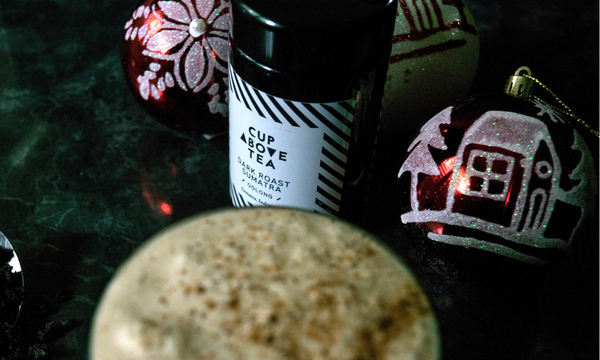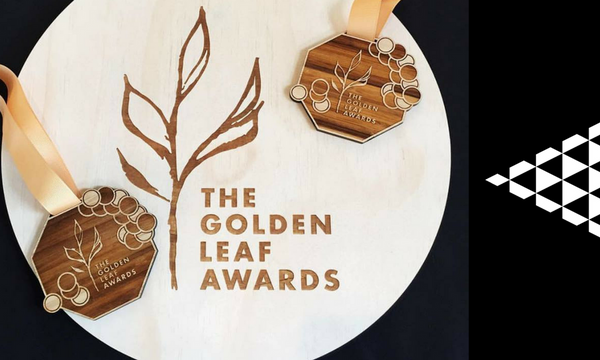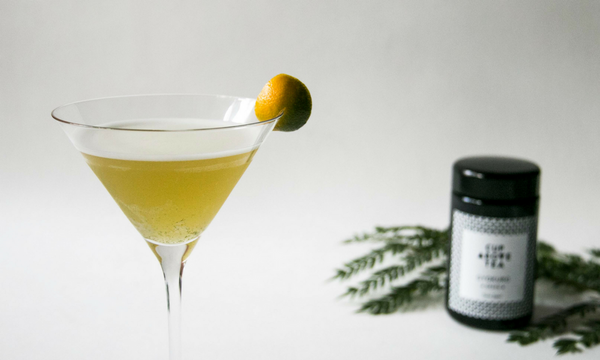Why tea?

Founder and Certified Tea Master, Alison Dillon shares her tea journey and explains how Cup Above came about.
I’ve always loved tea, but in terms of my professional tea development, I suppose I should really attribute it to Champagne.
My weak spot for authentic champagne, coupled with a family connection to viticulture meant I learned more than my fair share about wine making. I came to understand how terroir, growing conditions, processing, innovation, tradition, skill and effort all combined to impact taste and quality.
I could piece together all the parts of the story from vineyard to bottle. When I took that delicious, effervescent sip from the champagne flute, I could taste all the hard work, dedication and age-old artisan skill. Ultimately it is this knowledge that contributes to truly appreciating a grand cru.
I was drinking tea relatively mindlessly but relatively often and it was these three concepts – provenance, craftsmanship and seasonality – that really got me thinking about how this might apply to tea.
Like wine, tea is an agricultural product, so I figured surely there were similarities between the two. I wasn’t a particularly adventurous tea drinker initially. I mainly stuck to blended and flavoured blacks and I mostly used dust-quality tea bags from the supermarket shelf (don’t judge me, my palate knows better now!).
I knew enough about the tea to start questioning exactly why my Darjeeling tea tasted and looked so different to my english breakfast. I wanted the detail on what made a black tea a black tea and not a green tea. Is it grown that way or is it what happens during processing? I wanted to know why I could buy some tea for $1 and why other teas were worth upwards of $1000 for just a few grams?
I researched and discovered what I could on my own. I quickly worked out that tea is steeped in mythology and there is actually a lot of contradictory information that gets picked up and repurposed and shared all over the internet, disturbingly often by tea merchants who should probably know better.
I still had lots of unanswered questions, but I’d discovered enough to know I was fascinated. So with that, I embarked on my official tea training journey, completed my formal tea studies to become a certified tea master and headed abroad to get deeply immersed in processing, production and culture at various tea gardens around the world.
The more I learned, the faster I realised I’d been missing out. I’d been putting up with inferior, mass produced tea for far too long. In the liquid world, we readily appreciate and understand the vast quality spectrum that differentiates a cask wine from a vintage bottle of aged red, or instant coffee from single origin fresh-roasted beans.
There’s a tea spectrum too. But most of us are languishing at the wrong end of it.
I founded Cup Above to change that.
There’s some really exciting things happening in the tea world these days, and tea is finally starting to get some of the attention it deserves. Most large shopping complexes have a brand name tea merchant, there are more and more types of tea available on the supermarket shelf and cafes and restaurants are starting to up their offering. But these sorts of merchants need to offer product that will withstand the volume they move. It’s not a good look for the shelves to be empty because there isn’t enough tea to go around so they rely on mass produced tea.
This is tea grown in huge quantities, often harvested by machine rather than hand, working conditions may be very poor, and it is exported by the tonne. More often than not, it’s purchased at auction and blended with other tea to create a consistent flavour, so that the consumer’s teabag produces exactly the same taste, year after year after year. As a consumer you know next to nothing about what you’re drinking, other than maybe what country it comes from. There is no transparency. With no transparency comes a high risk of marketing hype and customers don’t have a full set of criteria to compare one product against another.
This is absolutely not what Cup Above is about.
I want to change the way you think about tea as a product. I want to give tea, and the people behind tea, the credit and kudos deserved.
But, let’s be clear, we’re talking about top end tea here. Exceptional, extraordinary, hard-to-access tea. We’re talking about small-batch, single origin, single harvest tea that is often produced in miniscule quantities. In some cases, we’ll purchase the entire batch from our tea master meaning that specific tea can only be experienced via Cup Above, there is quite simply no more of it available to sell. Once it’s gone it’s gone, and chances are next year’s harvest will taste different.
 We’ve tasted and evaluated thousands of leaves to curate a tea library that gives you the chance to experience some of the finest, rarest and most fascinating teas. We bring you only the very best from a special collection of small family gardens around the world.
We’ve tasted and evaluated thousands of leaves to curate a tea library that gives you the chance to experience some of the finest, rarest and most fascinating teas. We bring you only the very best from a special collection of small family gardens around the world.
Our collection changes seasonally, because tea is a seasonal agricultural product. Depending on the growing conditions throughout the year, the same leaves harvested from the same plant in the same way can taste extremely different from one year to the next. It’s these flavour nuances that make tea so fascinating. Think of it like wine vintages. Like wine, we also select some of our tea for museum release and aging. These are teas we think will evolve and become amazing and we want to experiment with them a little. You won’t find this sort of tea in the mass marketplace.
There are plenty of merchants out there touting ‘premium’, or ‘high quality’ tea. We are all for better tea and more savvy tea consumers, but it’s also starting to make these terms a bit dangerously redundant. That’s why we’re committed to fully disclosing the provenance details of our tea. This is exceedingly rare and very few tea businesses in the world do this in such detail. We absolutely respect the handful that do.
We want you to know exactly what you’re drinking so you can appreciate and taste the journey from garden to glass. We tell you who our farmers and tea masters are because they are the ones that deserve the credit, and we’re proud to showcase their work. It’s because of them that you can taste true art in craft. These artisan growers have spent a lifetime perfecting their skills and in the interests of transparency, preservation and education, we share their stories with you. Stories that we hope sustain heritage, insight curiosity and inspire learning.
Cup Above is my way of introducing extraordinary craftsmanship, exceptional provenance and incredible tea to those of us with discerning palates who want a more sophisticated drinking experience. It’s about enjoying little moments of luxury and indulging in the finest of the fine. It’s about recognising and appreciating the skills of exceptionally talented craftspeople. It’s about being the complete antidote to ubiquitous, soulless, mass market tea. It’s about transparency from garden to glass. It’s about helping my wonderful clientele to appreciate tea through a brand new lens and build their own seasonal collections.
In summary? Cup Above is about sharing the stories we drink.
It’s a pleasure to have shared my own story with you.
Leave a comment
We would love to hear what you think. Leave us your thoughts on this article.
You Might Also Like...

Homemade Eggnog Infused with Oolong Tea
Oolong Tea Eggnog - the perfect festive tea-infused treat for the holiday season. It's quick, easy and screams Christmas!










